Overview
|
I am a natural scientist who is broadly interested in the evolution of interactions between processes and matter. My aim is to further our understanding of the birth, collaboration, and evolution of planetary processes across deep time and space. Such processes include planet accretion/differentiation, melting/freezing, compositional segregation, mantle convection and plate tectonics, atmosphere and ocean evolution, core dynamics, planetary dynamos, origins of life, among others. My current interests are in the development of what I call planet behaviorism, an effort to understand how past events influence the future evolution of a planet, and the mechanisms that underlie planet-scale hysteresis and coordination of processes across enormous scales. I am also an institutional architect and manager, with interests in the social and logistical aspects of the scientific enterprise. The international Earth-Life Science Institute (ELSI) we founded at the Tokyo Institute of Technology (Tokyo Tech) is an ambitious effort aiming to rally world class researchers in fields ranging from astrophysics to biology to come together and tackle one of the most inspiring and challenging questions of all time: How does life begin? We have leveraged a generous seed grant for our first 10 years from the World Premiere International Research Center Initiative of Japan's Ministry of Education, Culture, Sports, Science and Technology (MEXT) to build an unique institute with enormous ambitions, both scientifically and organizationally. This is a rare opportunity and the work of building a new collaborative inter-disciplinary brick-and-mortar scientific research institute from scratch in a fascinating multi-cultural context has been enormously enlightening and rewarding. Planetary processes are carried out in an open system context, involving exchange of matter and energy across vast spatial and temporal scales. At ELSI we are working to establish an intellectual framework for understanding planetary diversity from the ground up. This synthesis is central to understanding the assembly of Earth and the solar system, and also for establishing a broader understanding that might in principle allow us to better characterize the rapidly expanding catalog of exoplanets. The emergence of life on a planet results from a collaboration between a broad array of geological processes, and understanding how this happened here on Earth better informs our search for life elsewhere in the universe. Links to Further Information:
| 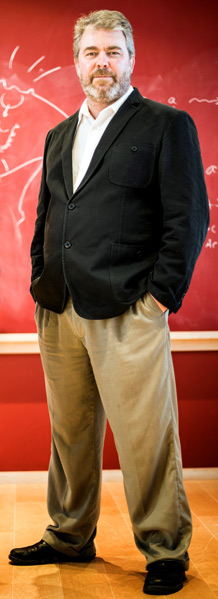 Photo by Nerissa Escanlar |
|---|
Highlights
Chemical Interactions at a Mushy Core-Mantle BoundaryViscous forces associated with mantle convection deform the core-mantle boundary, pushing the rocky frontier down into the liquid outer core beneath mantle downwellings. Metal is expected to intrude into depressed rock by opening pore spaces, allowing for significant volumes of metal and rock to undergo chemical interactions as it becomes a metal-rock mush up to 1 km thick. Former student Kang Wei Lim used dynamical models to show how these mushy regions can undergo gravitational collapse, leading to a small scale convection circulation in the lowermost mantle that increases the amount of material that can interact in the mushy zone. This model may help explain recent inferences of isotopic anomalies that are thought to be carried to the surface from the deep mantle. Reference: | 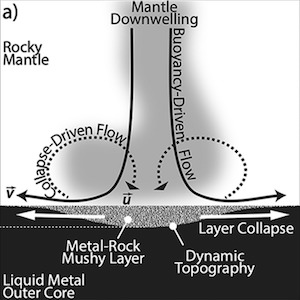 |
|---|
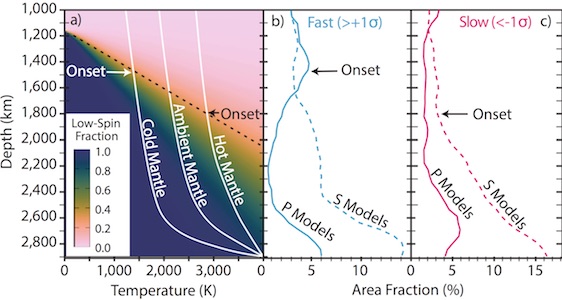 |
Seismological Expression of the Iron Spin Crossover in Earth's MantleA change in iron electron spin pairing in the mineral ferropericlase has long been predicted by mineral physics theory and experiments, but the seismological signature was not detected in global profiles. We focused on examining only faster and slower regions of the lower mantle in order to look for it, and found it. However, the absence of this signature in the average mantle profile probably means that large portions of the lower mantle do not contain enough ferropericlase, in good agreement with our BEAMS model (see below). Reference: |
|---|
Hydrogen in the Earth's CoreA long-standing debate is where and when Earth got its water during the formation of the solar system. It was once thought that much of Earth's water was delivered late, from the outer solar system, after Earth was largely accreted. But isotope and other evidence has been pushing us to realize that it was probably delivered early, from the gases that persisted in the inner solar system prior to the clearing of the solar nebula, this water infused into magma-rich accreting planets. Experiments and models done in collaboration with Kei Hirose's former student Shoh Tagawa showed that a large portion of the hydrogen in the magma ocean would have gone into the Earth's core. Now we are studying whether hydrogen could be the most important alloy in the core. Reference: | 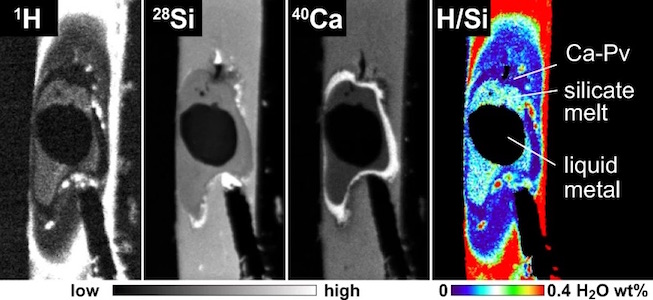 |
|---|
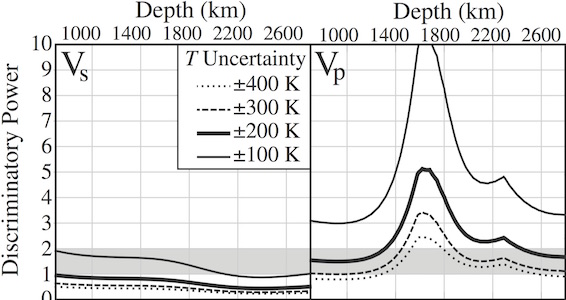 |
Impossibility of Inferring Lower Mantle Composition from 1D Seismic ProfilesSomebody once said that the main purpose of mineral physics is to predict seismic properties of rocks to infer the composition of the mantle from seismological profiles. In this paper, we put this idea to the test, and unfortunately find that this is impossible. The main reason is that seismic properties are much less sensitive to potential composition variations than to temperature, and uncertainties in the latter dwarf our ability to make inferences of the former. The opposite situation holds in the Earth's outer core. An exception is the effect produced by a spin crossover of iron in ferropericlase, but this signal is absent in seismic profiles. This paper presents a rigorous approach called "discriminatory power" to measure our inferential abilities that can be used in any field. Reference: |
|---|
Modeling the Ultralow-Velocity Zone (ULVZ) as a Thin LayerIt is thought that the ULVZ is a layer of iron-enriched soft dense rock at the core-mantle boundary, somewhat analogous to the reverse situation of Earth's crust at the surface. We used a mathematical approach that approximates the fluid equations of such a thin layer to obtain a ULVZ equation that governs such a body's shape and distribution. Our models show that such a ULVZ gathers into compact islands, and application of our solutions to seismological observations indicates that ULVZ likely have a viscosity as small as 1E18 Pa-sec. Reference: | 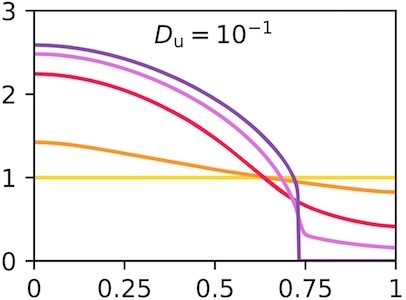 |
|---|
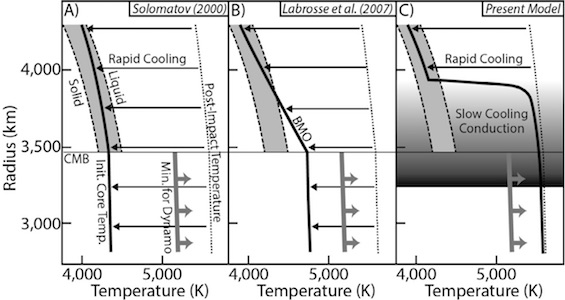 |
Gravitationally Stratified Basal Magma Ocean, Another Solution to the Core Heat ParadoxThe basal magma ocean model (BMO, see below) was a revolutionary idea that connects Earth's thermal history, fractionation, and present structure. However, high thermal conductivity (see below) implied that Earth's core was too hot to make it work, so we considered whether the BMO might have been gravitationally stratified, allowing for a much hotter early core temperature. Matthieu Laneuville developed some very clever models of this scenario in this paper, with elegant mathematics to capture a complex situation. Reference: |
|---|
SiO2 Crystallization in the Earth's CoreUsing laser-heated diamond anvil cell experiments that allow us to reproduce the extreme pressures and temperatures at Earth's center, we found that a metal Fe-Si-O alloy crystallizes SiO2 upon cooling, until all Si and/or O is exhausted from the alloy. Since Si and O were expected to go into the Earth's metallic core during formation, the same process may have played out in Earth's core. The energy released by this process is more than sufficient to account for production of the geomagnetic field since the early Earth, thus offering a new solution to an old paradox. Reference: | 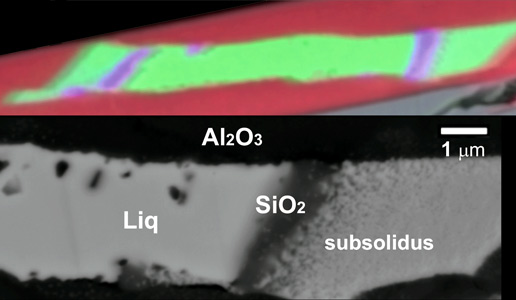 |
|---|
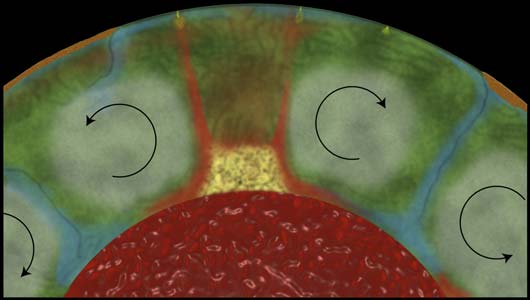 |
Bridgmanite-Enriched Ancient Mantle Structures (BEAMS)BEAMS is a model that proposes that large-scale silica-enriched highly viscous regions stabilize and organize the pattern of convection in the lower mantle. BEAMS may explain why volcanic hot spots (e.g., Hawaii) could be geographically anchored from below, why some subducted lithosphere appears to "stagnate" in the deep mantle at around 1,000 km depth, why the seismic signature of slabs weakens in the mid-lower mantle, why there is an apparent viscosity increase in the mid-mantle, how primitive isotopes could be preserved despite whole mantle convection, and many other paradoxical observations that are otherwise difficult to explain in the context of a homogeneous well-mixed mantle. Reference: |
|---|
The Basal Magma OceanThe basal magma ocean was the first model to fully couple Earth’s core and mantle thermal evolution together with geomagnetic constraints, seismological observations of slow velocity features in the core-mantle boundary region, thermodynamical limits on dynamos, physical properties of rocks and metals at high pressure and temperature from laboratory experiments, and melting behavior of rocks at extremely high pressure. The model predicted that the bottom of the mantle would have been extensively molten in the past, gradually crystallizing to produce structures that are seismically observed today in the deep mantle. This work is an outgrowth of modeling efforts I began as a graduate student, and then came to fruition during my first post-doc at the Institut de Physique du Globe de Paris in France. I had been trying to produce partially molten layers at the core-mantle boundary (CMB) called ultralow-velocity zones (ULVZs, see below for more) in our models by melting ordinary mantle. This ran into myriad problems, such as keeping melt and solids from separating. This issue became more acute if we accounted for the fact that the CMB was itself hotter (and hence more molten) in the past. One day, while discussing with Stephane Labrosse, the idea struck us that we should make ULVZs by freezing molten mantle, instead of melting solid mantle. Eureka! This was precisely the conceptual Copernican inversion that allowed us to move forward with a new model whereby ULVZs and many other deep features could naturally be produced as by-products of a basal magma ocean. We have also shown that fractional crystallization can produce more dramatic composition variations than partial melting, such as iron oxide enrichments great enough to produce the ~10% density anomalies inferred for ULVZs. References: |  |
|---|
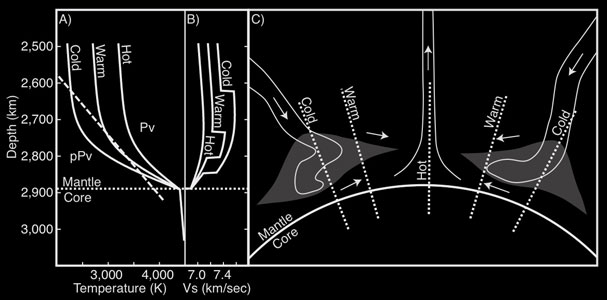 |
The Post-Perovskite Double-CrossingThe post-perovskite double-crossing is a hypothesis I proposed in 2005 that integrated geodynamical models of Earth's heat flow and internal boundary layer dynamics with seismic observations attributed to a newly discovered post-perovskite phase transition. With seismologist Christine Thomas, we used mineral physics data to calculate a model in the context of a thermal boundary layer, propagated seismic waves through the model structure, and compared it with observed data. We showed how the validity of this model makes specific predictions about the temperature of the core and the heat flux passing between the core and mantle, which are 2 of the most important (and uncertain) parameters in the Earth affecting its thermal and magnetic evolution. The simple figure I made (shown here) has been shown hundreds (if not thousands) of times in presentations at conferences and workshops around the world. References: |
|---|
Asthenospheric Decompression Melting InstabilityI developed models and theory for a kind of convective instability that occurs in Earth's asthenosphere when it undergoes partial melting. The instability can produce a large quantity of melt, and interestingly it is suppressed by rapid upwelling induced by lithospheric extension. This is a process that takes place at mid-ocean spreading ridges, or in regions undergoing distributed extensional deformation. It explains the peculiar observation that fast spreading mid-ocean ridges have smooth variations in magmatism relative to slow-spreading ridges, and why volcanism peaked in the Western USA after extension ceased. References: | 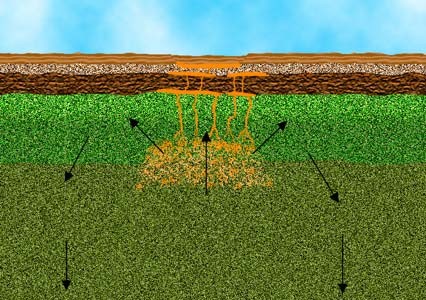 |
|---|
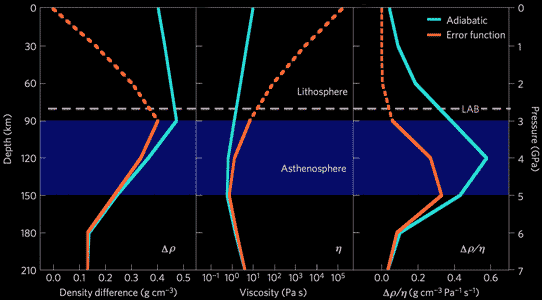 |
Foundered Melt at the Lithosphere-Asthenosphere BoundaryUsing data from a combination of mineral physics experiments at high pressures, we proposed that melts forming in the shallow mantle could percolate upward and become trapped at depths of 80 km in the Earth, perhaps freezing to form a deep sill-like structure. This model can explain seismic observations of a reflecting layer buried at this depth range which is called the "Lithosphere-Asthenosphere Boundary," which has been a very hot topic in geophysics in recent years. Reference: |
|---|
The Origin of Ultra-Low Velocity Zones (ULVZ)Over 20 years ago seismologists detected thin veneers of material at the very bottom of the mantle where seismic waves slow down dramatically, and proposed the presence of partial melt. Through a series of numerical modeling investigations I showed that the observed ULVZ could not be produced due to partial melting of "ordinary mantle" as it circulates through the CMB region. The results instead favored compositionally distinct ULVZ which are dense and have a lower melting point than ordinary mantle owing to enrichment in iron oxide. This work laid the foundation for the basal magma ocean (BMO) model described above. Although my early models suggested that melt percolation poses a challenge to melt retention, my later more sophisticated mush dynamics model calculations showed that partial melt could be prevented from draining out of ULVZ by the effects of viscous stirring driven by convection in the overling mantle. References: | 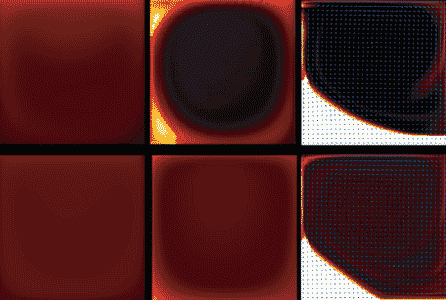 |
|---|
 |
Conductivity and Thermal Evolution of Earth's CoreAs early as 2010 my colleagues Kei Hirose and Razvan Caracas began to inform me that their experiments and ab initio calculations were predicting core electrical/thermal conductivity that was much higher than we previously thought. As the core convects, it establishes an isentropic gradient and these results implied that huge amounts of heat would be lost from the core by conduction down this gradient (assuming the mantle carries it away quickly enough). Over the next several years we developed a collaboration that brought together experts in all of the relevant fields, and in Gomi et al. (2013) we produced a paper that created an virtual earthquake in the geophysics community. Our paper was the first to propose that a saturation effect in electron transport occurs in the core, owing to electron scattering length scales diminishing to the inter-atomic distance. In October 2013 I convened a workshop on this subject at the foot of Mt. Fuji in Japan, gathering many of the leading experts in this field. The debates that played out at this workshop continue to reverberate in the literature today. Laboratories around the world are dedicating enormous resources to sort out this problem, and to understand the implications for planetary evolution. This work motivated later studies to find alternative mechanisms for driving outer core convection and the ancient geodynamo, including exsolution of non-siderophile elements (like Mg) ingested into the primordial core at ultra-high temperatures during Earth's accretion, a stratified basal magma ocean (BMO) that allows for higher initial core temperatures, and crystallization of SiO2 from a Fe-Si-O alloy in the outer core (see above). References: |
|---|
Modeling Projects
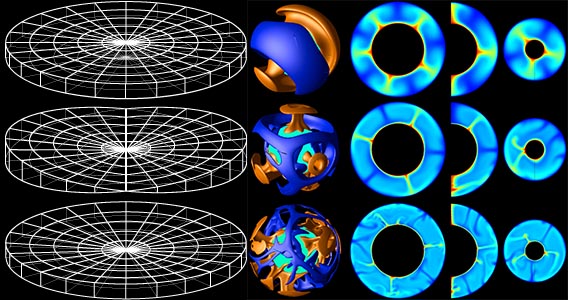 |
The Spherical AnnulusIn many geophysical scenarios it is often useful to employ two-dimensional models that allow one to capture higher resolution details and to push parameter limits beyond what is possible in 3D models. But the inherent spherical nature of planets is difficult to capture in two dimensions, and there are many problems with models that employ cylindrical coordinates because the equations do not exhibit important spherical-like scaling in radius. In this paper, I proposed a way to make a 2D cut through a 3D spherical coordinate system that allows one to completely capture spherical scaling while utilizing a convenient 2D annular domain. Paul Tackley added this option to his convection code "STAGYY" and ran test cases to show comparisons to full 3D spherical calculations and 2D cylindrical models. This method has become very popular and is now widely used by researchers in computational geophysics. Reference: |
|---|
Solid Cell Assembly Thermal ModelI developed a rapid, highly accurate, flexible, fine resolution model to compute temperatures inside solid medium high pressure resistance-heated experiments. The code was applicable to piston-cylinder-type and multi-anvil-type experiments, which are widely used worldwide to produce high pressure/temperature conditions for sample volumes ranging from 1mm to several cm. Supplemented by a beautiful user interface composed by my colleague Kurt Leinenweber, this code is still in use today by the high pressure community, and provides a state-of-the-art tool to design experiments with better control and characterization of temperature gradients. Reference: | 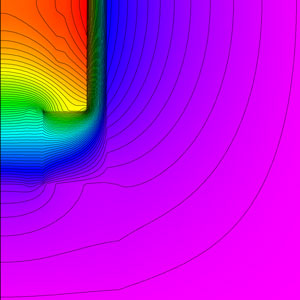 |
|---|
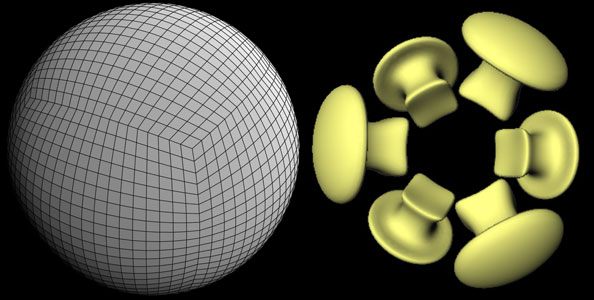 |
3D Mantle Convection in the Cubed SphereSummary: As a graduate student I developed a method for numerically modeling mantle convection in a 3D spherical shell using a non-orthogonal coordinate system called the "cubed sphere." This method uses overlap between adjacent regular meshes to achieve a more uniform resolution on the surface of the sphere than spherical polar coordinates. It was the groundwork for later models developed by other research groups which are now considered the cutting edge of numerical techniques in 3D mantle convection. Reference: |
|---|
TempDACI developed a fast and accurate 3D multigrid code for modeling ultra-high pressure experiments in the laser-heated diamond anvil cell (DAC). DACs are a very important tool that allow scientists to study material behavior to pressures exceeding the center of the Earth, and are responsible for many of the major scientific breakthroughs in studies of Earth and planet interiors in recent decades. The model I developed was adapted by graduate student Emma Rainey (Ph.D. UCLA, 2014) and she used it to calibrate experimental observations and directly constrain the thermal conductivity of samples. Reference: | 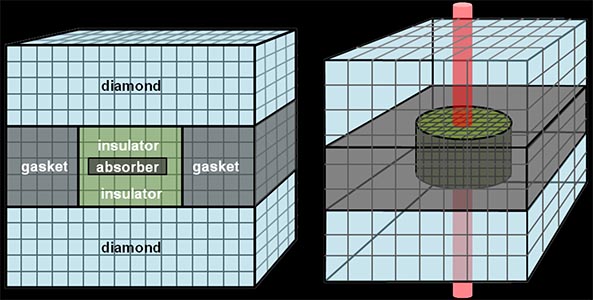 |
|---|
Reviews and Syntheses
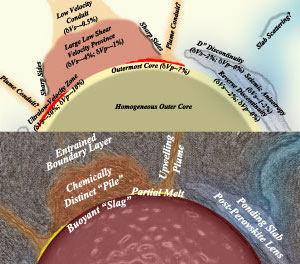 |
Core-Mantle Boundary Treatise ChapterIn 2014 Allen McNamara and I spent a great deal of effort to compile a big new chapter for the 2nd edition of the Treatise on Geophysics. We attempted to give a broad overview of the most pressing topics in deep mantle dynamics, with a focus on the main seismologically inferred features of this region and the processes that might be responsible for producing and shaping this fascinating part of our planet. The chapter includes in-depth discussions regarding the large low shear velocity provinces (LLSVP), D'' discontinuities, ultralow-velocity zones (ULVZs), outermost core stratification, and more. We also discuss other important issues such as core-mantle heat flow, chemical reactions, and mass transfer. Reference: |
|---|
Perovskite in Earth's Deep InteriorKei Hirose, Ryosuke Sinmyo, and I were recruited by the journal Science for a special issue they composed on the subject of perovskites, which are an important class of materials with exotic properties having numerous important industrial applications, as well as being the most abundant kind of crystalline phase in the Earth's mantle. We describe the central role that perovskites play in the long-term evolution of the Earth's lower mantle, including a synthesis of mineral physics constraints as well as considerations arising from mantle dynamics. Reference: | 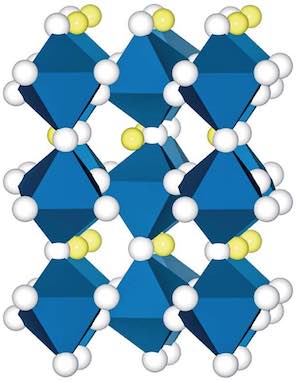 |
|---|